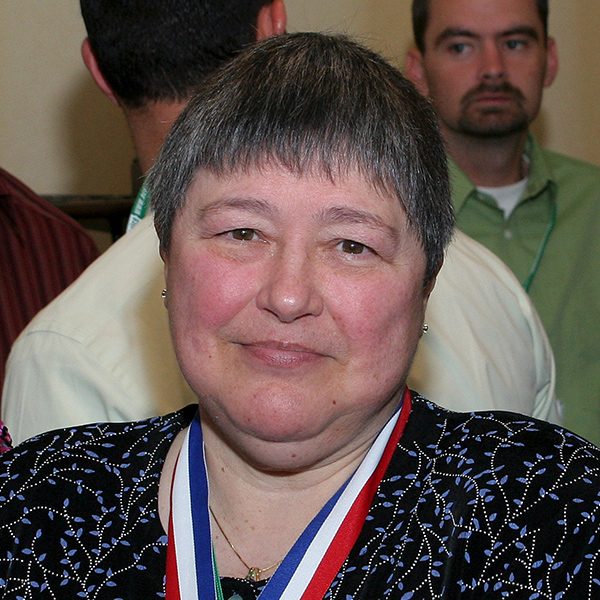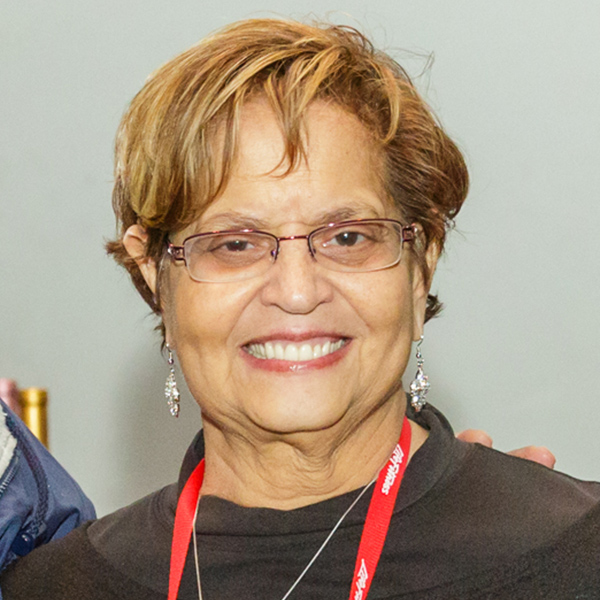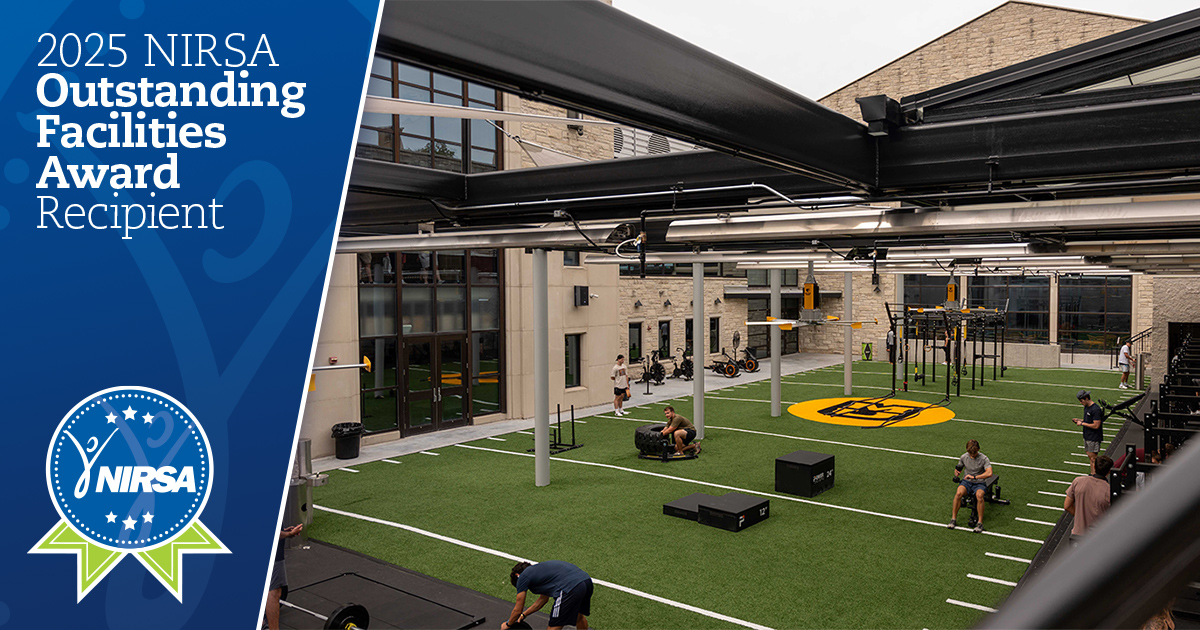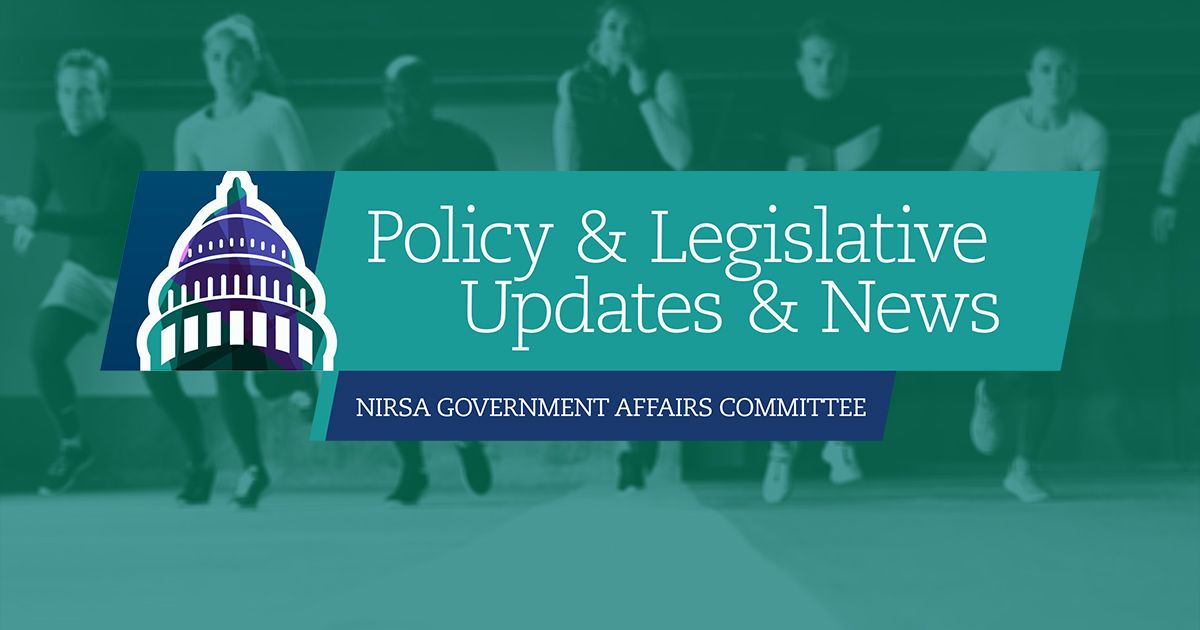In the previous articles in this series, we've explored NIRSA's founding, the early years, and the expulsion of female members from NIRSA. While the vote to return women as official members of this association succeeded by an overwhelming majority, women working in campus recreation during the early 1970s still faced many challenges.
50 years of women in NIRSA
As we mark the jubilee since women rejoined NIRSA in 1971, it's important to remember the struggles of pioneering women who broke into the field of recreational sports and helped shape the profession of campus recreation that we know and love today. Many talented and driven women showed tremendous fortitude in standing up for their proverbial seats at the recreational sports table.
In her article "Women in NIRSA," Hazel Varner of Keene State College chronicles some of the early gains for women during that period. She explains that after the 1971 Annual Conference in Blacksburg—when members voted to reinstate women into full membership—29 women attended the first NIA Annual Conference they were allowed to attend after more than a decade of exclusion. Seven of them were listed as presenters during that 1972 Annual Conference hosted by the University of Illinois.
When the Association met in Tampa, FL the following year, one of the program sessions included a panel presentation on women's intramurals that was attended by 21 women. Following that session, Hazel—a leader and pioneer in campus recreation—helped organize an impromptu women's luncheon to continue sharing ideas.
Women had another momentous breakthrough at the 1974 conference in Tempe, AZ when Carolyn Hewatt of the University of Texas at Austin was nominated for the office of NIRSA President. Ultimately, she was not voted into office, but her candidacy served as an important catalyst for the women in NIRSA to begin speaking up about changes that needed to be made in order for the organization (and the profession) to thrive.
A rising tide
In talking about women's integration into the NIA, Hazel says plainly that women were not made to feel especially welcome and that "sexism in programs was rampant." Following that conference, Hazel reached out to the 45 women who held current NIRSA memberships at the time and invited them to participate in a survey concerning women's issues. Their shared concerns in the form of the survey results were brought to the 1975 Annual Conference in New Orleans. NIRSA President Chuck Schelsky of Oklahoma State University was NIRSA President at the time and he invited Hazel to present her findings during the executive committee meeting that year. She advocated for "a ten-point program" to advance opportunities for women and "make the organization more relevant for women."
The outcome was considered successful and an affirmative action committee was approved, appointed, and tasked with developing a plan for the organization. But there were two consequential failures. A compensation study for the field, which included salary and position comparisons for men and women, didn't come to fruition until 1986 and negotiations to appoint a woman to the Executive Committee broke down over unshared principles of "equal treatment for men and women."
During the week's negotiations in New Orleans, the all-male Board of Directors agreed to the appointment of a woman to the Executive Committee, but was not willing to pay the travel and lodging expenses of an appointed woman member to attend the mid-year meeting. Travel expenses for attending male Executive Committee members were reimbursed. The offer of a token appointment was declined and the goal of hearing a woman's voice at the NIRSA Executive Committee table wasn't realized until 1980 when "Patti Homes became the first woman elected to a national office" in NIRSA.
The 1975 Annual Conference in New Orleans was also marked by another impactful event for women in NIRSA. The invited speaker for the conference's opening general session was scheduled to be an official from the Department of Health, Education, and Welfare who would address the final regulations of Title IX and its enforcement. At the eleventh hour, the speaker canceled, and an ad hoc panel was assembled to cover the topic. Hazel and Carol Harding of Michigan State University were included on this panel and embraced the opportunity to educate their fellow Association members.
This introduction to Title IX proved to be unfamiliar and uncertain territory for many of the members of the audience and Hazel described the response as not the ideal outcome the presenters had envisioned: "While men felt threatened [by the introduction of Title IX], young women in their first jobs also became scared. [It] created tension between men and women, and also between some women. The next few years brought stressful times in NIRSA…for women."
The following year, a woman was slated for election to a board position and while she didn't carry the vote, a woman would again soon serve on the Executive Committee.
Hazel Varner recalls, "Carol Harding ran for Vice President, Region I, opposing Jim Peterson. Peterson won the election and finding he could not complete his term, recommended a woman, Lynne Heyliger, be appointed to fulfill his term." Lynn served a one-year term as Region I Vice President on the NIRSA Board for 1976-1977.
Breaking beyond barriers
What was happening within NIRSA in the 1970s reflected the turmoil on campuses: Men's and women's physical education programs were merging, and women's athletics had emerged on campuses and was quickly asking for significant resources. Other national organizations were uneasily integrating genders.
In larger society, beyond the walls of campus intramural programs, women were organizing for the ratification of the Equal Rights Amendment, addressing issues of pay inequality, advocating for the passage of anti-discrimination legislation like the Pregnancy Discrimination Act and the and Equal Credit Opportunity Act, and working to embody principles of the "second wave" of feminism. NIRSA was allowing women to become members, but those women who joined the Association had difficulty procuring a company credit card and could be fired from a job for becoming pregnant.
Subsequent years would see topics like affirmative action gradually take hold and become accepted more widely across the profession. Women's experiences were increasingly reflected in program sessions at the Annual Conference.
By 1980, the face of NIRSA politics began to change. Nearly ten years after regaining access to membership, Patti Holmes, Holmes Training & Development, became the first woman elected to a NIRSA national office. She served as the Region I Representative from 1981-1982 after a three-year tenure as State Director for Ohio from 1975-1977.
Five years later, women in NIRSA experienced a "landmark day" when Mary Daniels of The Ohio State University became NIRSA President-Elect, serving as NIRSA President in 1986. Mary and Patti were celebrated with NIRSA's Honor Award in back-to-back years. Their pioneering leadership paved the way for many women to be elected into office in NIRSA; between 1980 and 1992, eleven elections to NIRSA offices were won by women.
We asked NIRSA members who were at different points in their careers during this period of NIRSA's history to reflect on the time. Their recollections foster a better understanding of the changing dynamic between men and women campus rec professionals of the time.
Patricia Besner

Patricia "Pat" Besner retired as Senior Director of Recreation at the University of Toledo in 2010. She joined NIRSA in 1980 and established herself as a leader in the field of recreational sports at the state, regional, and association-wide levels, holding elected and appointed volunteer positions for decades. She served as NIRSA President in 1996 and received the Association's highest accolade—the NIRSA Honor Award—in 2005, five years after receiving the ORSA Honor Award.
Looking back on her career, Pat takes pride in helping build Toledo's broader campus rec programs, staff, and facilities.
She also is proud of her role expanding the breadth of programs and educational activities offered by NIRSA to its members during a period when change of almost any kind was met with significant resistance. Pat connected with us to explore a few questions about working in campus rec at the time.
What barriers to attaining or serving in influential roles or leadership positions did you, or women who are/were your peers, face in pursuing a career in campus recreation?
"I received my undergraduate education when classes and activities were gender segregated in physical education and recreation. When I switched my career path from teaching to administering programs, I was hired on to do only women's-only programming. But I quickly became involved in all programs. I was the first woman director in Student Affairs at the University of Toledo. I earned my stripes and sold myself in the interview process. I found that my peers who were succeeding in getting higher positions were following similar pathways."
How did conditions and circumstances change for women working in recreational sports during your tenure in the profession?
"Significant changes in higher education and businesses have created many more opportunities for women and other underrepresented individuals. The leadership development and learning opportunities offered by NIRSA continue to prepare current and future leaders."
How can NIRSA as an organization and NIRSA members as individuals support the leadership development of women (and other underrepresented identities)?
"Campus recreation professionals generally, and NIRSA members especially, are a group of educators who are willing to share and mentor. So, don't be shy: jump into the pool. Start getting involved at state or regional levels to test the waters. No opportunity is too small. And make sure to fulfill all the responsibilities you accept."
Mary Daniels

Mary Daniels, PhD is the first woman to have served as President of the Association.
She spent the whole of her professional career at The Ohio State University, beginning her tenure there in 1972 as Assistant Director in Recreational Sports, while she was still working on her PhD. After completing my PhD in 1977, Mary was appointed to a dual role in 1977 after completing her PhD, serving as a member of the graduate faculty in the sport management program while simultaneously taking on the expanded role of Associate Director in Recreational Sports. In 1978, she was appointed Assistant Vice President of Student Affairs, a position she held until her retirement in 2001.
Mary credits support from supervisors, mentors, and peer NIRSA members for her active engagement in and contributions to the growth of NIRSA. She served as President of NIRSA in 1987 and remained active for more than two decades, helping elevate our field as a profession. She championed the professionalization of the field as one that required specialized knowledge and intensive academic preparation. She contributed to the development of the CRSS (Certified Recreational Sports Specialist) and was an advocate for mainstreaming campus recreation's role on college and university campuses with respect to student recruitment, student development, and student leadership development.
A trailblazer in integrated wellbeing, the Ohio State University's Student Wellness Center under Mary's leadership was instrumental in the creation of a university-wide wellness collaborative, with participation from over 30 institutional entities.
A more tangible point of pride for Mary "is having the opportunity to work with an incredible, visionary team in the design and construction of a $120 million recreational sports facility." In 1991, she was the first woman to be conferred the distinction of NIRSA Honor Award recipient.
Mary connected with us to explore a few questions about working in campus rec at the time.
What barriers to attaining or serving in influential roles or leadership positions did you, or women who are/were your peers, face in pursuing a career in campus recreation?
"In the 70s and 80s, as I progressed in my career, I always felt I needed to be 'better' than my male counterparts to be 'equal.' Working hard and being accomplished in my efforts paid off. I was noticed, 'accepted,' respected, and afforded opportunities that led to more opportunities. I had wonderful support from my professional superiors (who were all male) and was encouraged to pursue experiences and responsibilities that resulted in broader institutional and national roles."
"Women in my era walked a fine line between needing to demonstrate their 'worth,' while at the same time, not devaluing or minimizing the work/role of their male counterparts. Integrity, self-confidence, empathy, ability, and strong interpersonal skills were important traits that helped see us through in a male-dominated world."
How did conditions and circumstances change for women working in recreational sports during your tenure in the profession?
"I do believe that things have changed for the better, but we must still continue to improve and change. Thanks to laws, more public awareness, greater accountability, and specific institutional initiatives, women are being afforded more opportunities to advance, succeed, and ultimately shape institutional culture. This is a work in progress."
How can NIRSA as an organization and NIRSA members as individuals support the leadership development of women (and other underrepresented identities)?
"From my perspective, as a retired professional, NIRSA is on the forefront of setting the standard for leadership development among women and other underrepresented groups. Look at our profile of current leaders and celebrate our successes. I have confidence that the current and future generations of NIRSA members will not lose focus and will continue to raise the bar in terms of opportunities to promote talented individuals to leadership roles in our profession."
Juliette Moore

Juliette Moore retired in 2010 as the Director of the University of Arizona after more than three decades working full time in campus recreation. Her decorated career was marked with many accolades including the NIRSA Honor Award, NIRSA's highest distinction, in 2012. As the first Black woman to hold the NIRSA Presidency, her legacy will continue to endure for generations, with NIRSA's Distinguished Leadership Award bearing her name in honor of the monumental contributions she has made to the field of campus recreation.
Juliette connected with us to explore a few questions about working in campus rec at the time.
What barriers to attaining or serving in influential roles or leadership positions did women who were your peers, face in pursuing a career in campus recreation?
"It was always tough for women. I saw so much history denied, especially for women of color, because [the history of NIRSA] was ignored at the time I was coming up as a young professional. I was possibly the only Black woman active in NIRSA at that time. There were maybe one or two others who came along during the 70s and 80s."
How can NIRSA as an organization and NIRSA members as individuals support the leadership development of women and other underrepresented identities?
"A lot of time, for women directors, we've got to work three times harder than the men and it's something that's been constant throughout the ages, because the profession is a male-dominated field." Juliette describes the struggle for her to get involved in the field of recreational sports. Looking back to when she first started in this profession, she recalls a climate where campuses regularly financially supported male professionals and students in attending professional development opportunities, but not their female counterparts.
Juliette took action, encouraging and organizing female students and professionals to advocate for financial support from their campuses. "It was very difficult to achieve if you didn't make connections with certain influencers, so it was very difficult as a woman to make connections with those men."
How can NIRSA as an organization and NIRSA members as individuals support the leadership development of women and other underrepresented identities?
"It's important to not only encourage them but support them through the process. A lot of times, underrepresented individuals are very fearful that their goals are not going to be realized, or [if they stand for election] they are not going to get elected. But everyone who stands for office has to be prepared for that eventuality. That fear shouldn't stop you though; we need to be resilient in our efforts to ensure that women can support each other in moving forward.
You're going to get a lot of nos, but you also will get some yeses. And you've got to be resilient enough to not give up, because it may not be the right time for you to get a particular promotion this year, but two or three years from now, when the kids are in high school, maybe that promotion might be a better fit.
We have to look at all the issues that women are faced with; kids and other responsibilities influence our opportunities to lead and as an Association we've got to be able to at least not give up on anyone who has an inkling toward volunteer service. And we as women who are standing for election or applying for a leadership position need to continue to be resilient. If it doesn't happen for you this year, maybe the next two or three years will open even better doors for you. Keep reminding your underrepresented colleagues that leadership is a process, and some people need more encouragement than others."
We hope you'll continue to follow the journey of women making history in NIRSA over the coming weeks—a journey that opened the way for future NIRSA leaders.
- If you are interested in highlighting someone who has made significant contributions to the profession, contact a member of History & Legacy Work Group.
Becky Todd is currently the Associate Director for Programs at the University of Arkansas as well as the 2018 Annual Conference Program Chair.
Katherine "Katie" Geter is currently Coordinator of Rec Sports & Family Programs for University of Houston’s Campus Recreation; you can email her at kgeter@central.uh.edu.







